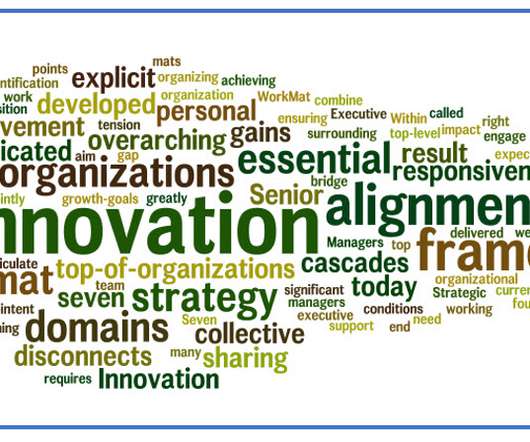So Where Is Innovation Heading?
Paul Hobcraft
MARCH 27, 2018
They point out that since 2014, only four types of innovation and that are all related to digital, have grown increasingly in importance in their pursuit by companies. So the need to innovate comes from digital as the source. It will fundamentally change the type of resources innovation requires.

























Let's personalize your content